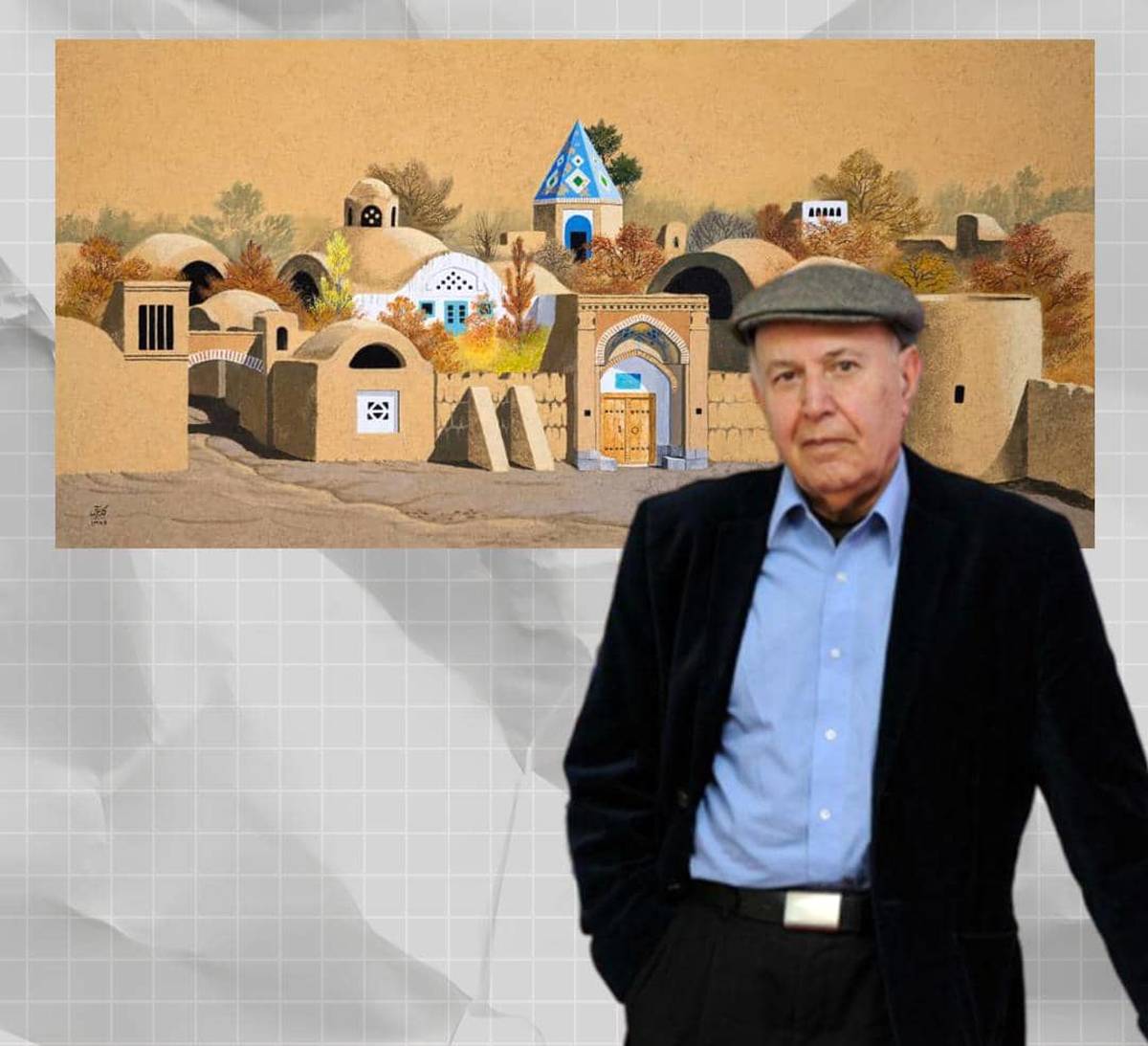
Raha Gallery Collection
Return to the Earth: Parviz Kalantari’s Mud-Styled Vision in Raha Gallery’s Collection
In his painting Oasis, Parviz Kalantari captures a vivid portrait of a bygone way of life—homes turned inward, courtyards filled with trees, and alleyways that served not only as thoroughfares but also as spaces for human connection. In this frame, Kalantari both revives the memory of those days and subtly critiques the modern disconnect between people and their roots or environments.
ArtDayME: The Middle East Raha Gallery Collection, which has been actively involved in cultural events for over two decades with an emphasis on supporting regional art, houses a diverse range of modernist and contemporary masterpieces by Iranian and Arab artists.
Among its collection is a notable work by renowned Iranian painter Parviz Kalantari, from his celebrated series of mud-brick desert landscapes. Titled Oasis, this piece—measuring 231 × 115 cm—was created in 2007 using traditional kahgel (mud-straw plaster) on canvas. It was first presented at Christie’s Dubai auction on October 20, 2015, with an estimated value of $30,000–$40,000.
An "oasis" refers to a fertile spot in the midst of a desert—and Kalantari masterfully brings this concept to life through his painting.

Parviz Kalantari (born April 1931 in Zanjan – died May 21, 2016) pursued formal academic training in art. His name is deeply tied to Iran’s schoolbook illustrations and the Institute for the Intellectual Development of Children and Young Adults. One of his artworks was even featured on a commemorative United Nations stamp. His well-known painting An Iranian City Through the Eyes of an Iranian Artist is displayed at the UN headquarters in Nairobi.
In 1974, Kalantari began his signature series of mud-based paintings. “I am the painter of my dust-laden homeland,” he once said. Yet through these works, he consistently created a utopian vision—a promised land marked by peace, harmony, beauty, and happiness. Notably, he never painted human figures in these dreamlike scenes.
The painting Oasis, now preserved in the Raha Gallery Collection, is more than a work of art; it is a window into the collective memory of a nation—a time when adobe bricks, sunlight, and soft afternoon shadows held meaning.
Amid the desert, where soil and wind entwine, Kalantari retells the story of life with his unique artistic language. A master of depicting traditional Iranian architecture, he uses the tactile quality of kahgel not just for texture, but to add conceptual depth. In this piece, the material transcends decoration—it becomes a visual language, speaking of a past filled with simplicity, warmth, and humanity.

Within this calm and earthy frame, domed homes, windcatchers, clay walls, and a turquoise-domed mausoleum sit like a tranquil melody. The harmony between curved domes and vertical elements such as doorways and towers brings balance to the composition and reflects the stability and permanence of traditional society.
The warm, earthy tones, in harmony with calm blues and turquoise tiles, infuse the work with nostalgia and an autumnal mood. Trees with red and yellow leaves symbolize the passage of time and transformation—much like Iranian society, which has moved from a serene past to a fast-paced, modern present.
From a sociological standpoint, Oasis, preserved in the Middle East Raha Gallery Collection, offers more than a visual representation of traditional architecture. It is a narrative of lifestyle, social interaction, and community—homes facing inward, tree-filled courtyards, and alleyways as spaces for human engagement. Through this lens, Kalantari not only revives a forgotten past but also critiques the modern rupture from one's roots and lived environment.

This piece stands as a testament to Kalantari’s enduring mission: preserving Iranian visual memory, returning to cultural identity, and resisting collective amnesia. In an era where concrete towers have replaced windcatchers and garden pools, remembering such imagery is not just an aesthetic necessity—it is a cultural duty.
This work is part of the Raha Gallery Collection.

LEAVE A RELPY